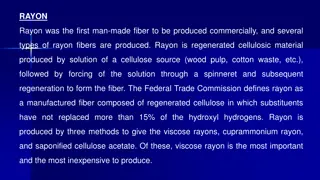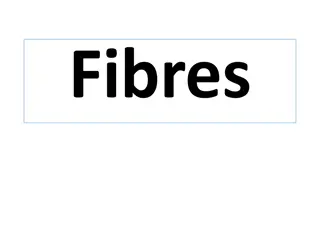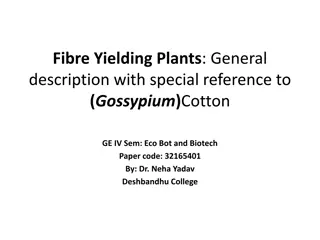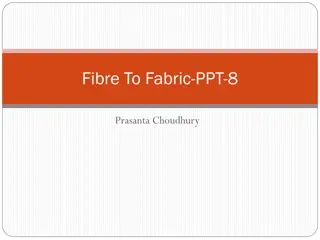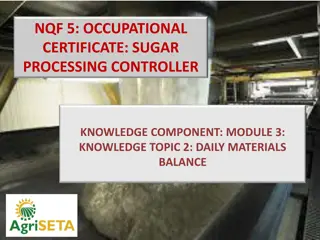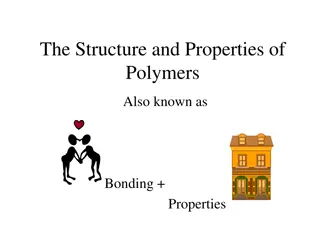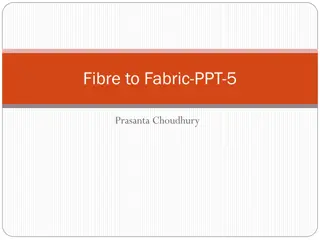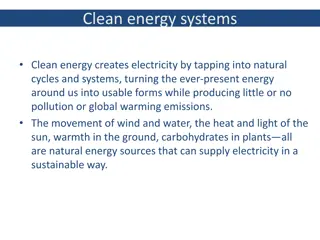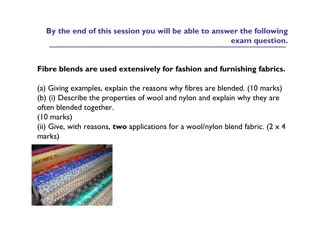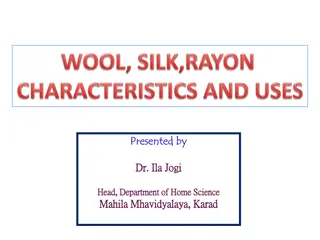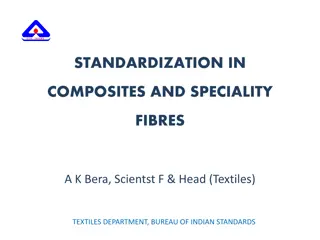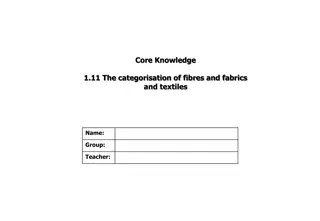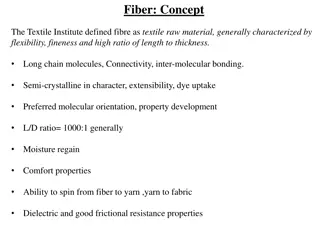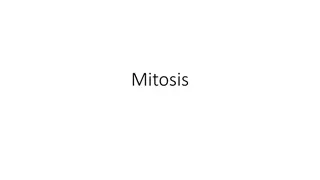Overview of Rayon: Production, Properties, and Applications
Rayon, the first man-made fiber commercially produced, is a regenerated cellulosic material manufactured from wood pulp or cotton waste. Viscose rayon, the most common type, is produced through processes like the viscose method. Additives such as titanium dioxide, sodium sulfate, zinc sulfate, and g
0 views • 18 slides
Understanding Fibres: Types, Classification, and Identification
Fibres are vital materials used in various industries. They are classified into natural, artificial, and synthetic categories based on their source. Differentiation of fibres occurs in pericyclic, phloem, and xylem regions. Identification involves microscopical examination, physical tests, and chemi
2 views • 30 slides
Exploring Fibre Yielding Plants: A Focus on Cotton (Gossypium) and Its Economic Botany
Uncover the world of fibre-yielding plants, with a special emphasis on cotton (Gossypium) from the Malvaceae family. Learn about the economic significance of cotton bolls and the classification of cotton fibres into different categories. Delve into the details of Gossypium hirsutum and the various c
1 views • 17 slides
Understanding Synthetic Fibres: Advantages, Disadvantages, and Uses
Dive into the world of synthetic fibres, from their production in laboratories using chemicals to their uses and comparisons with natural fibres. Explore the advantages and disadvantages of synthetic fibres such as nylon, polyester, and more. Understand their properties, including wrinkle resistance
0 views • 8 slides
Overview of Optical Fibre Technology and Applications
Optical fibre technology, spearheaded by Dr. Prabodh Sahai Saxena, revolutionizes communication systems through light transmission. This cutting-edge technology utilizes fibre optics made of glass or plastic to carry light signals, offering advantages like high bandwidth, low signal loss, and no ele
0 views • 20 slides
Understanding Daily Materials Balance in Sugar Processing
The daily materials balance in sugar processing involves monitoring the performance of the extraction plant by tracking the tons of cane crushed and mixed juice produced. Key data needed include corrected brix and pol percentages, suspended solids, fibres, and more. Averaging methods and carrying fo
2 views • 30 slides
Understanding Polymers: Structure, Properties, and Design Considerations
Explore the world of polymers, from the basics of polymer structure and properties to the intricacies of copolymerisation and thermoplastics. Dive into the role of molecular structures in determining polymer properties and discover the diverse applications of elastomers, plastics, and fibres in our
0 views • 15 slides
All About Jute: Cultivation, Properties, and Uses
Jute, a versatile fibre plant cultivated in India for over 5000 years, is known for its coarse, strong, and biodegradable fibres. This presentation explores the journey of jute from plant to fabric, emphasizing the importance of cultivation, soil and weather requirements, and top jute-producing stat
0 views • 10 slides
Clean Energy Systems: Harnessing Natural Cycles for Sustainable Electricity Production
Clean energy systems tap into natural energy sources like wind, water, sunlight, and biomass to generate electricity sustainably, reducing pollution and global warming emissions. Transitioning to renewable energy technologies can combat climate change, improve air and water quality, create jobs, and
1 views • 20 slides
Understanding Respiratory System Pharmacology and Cough Physiology
The regulation of respiration involves sensory and efferent pathways, with afferent pathways comprising stretch receptors, C-fibres, and irritant receptors, while efferent pathways include parasympathetic and sympathetic nerves. Cough physiology is a protective reflex initiated by various stimuli to
2 views • 43 slides
The Art of Fibre Blending in Textile Industry
Fibre blends enhance fabric qualities by combining different fibres to achieve desired properties. Wool and nylon, for example, are blended to improve strength and durability in garments like socks. Blending fibres also allows for unique finishes, increased dye absorption, and improved crease resist
0 views • 10 slides
Natural Fibres: Wool and Linen Applications and Characteristics
Wool, sourced from sheep, is known for its crimped appearance, elasticity, and hygroscopic nature. It finds applications in clothing, blankets, and upholstery. Linen, made from flax, boasts exceptional coolness and freshness, with applications in apparel, home furnishings, and industrial products. B
0 views • 19 slides
Standardization in Composites and Speciality Fibres by A.K. Bera
This content highlights the standardization levels, composite material database standards, infrastructure at both national and international levels, chain of validation of composites products, and constituent material specifications and test methods in the textiles department under the Bureau of Ind
0 views • 18 slides
Exploring Fibres and Fabrics: Natural vs. Synthetic, Weaving Techniques, and Non-Woven Textiles
Dive into the world of textiles with a focus on natural and synthetic fibres, weaving methods such as plain and twill weave, and non-woven textiles like felted wool. Discover the properties, characteristics, uses, advantages, and disadvantages of each type, including insights into animal and plant-b
0 views • 9 slides
Understanding Optics: Refraction and Optical Fibres in Science
Explore the concepts of refraction and optical fibres in this comprehensive science lesson. Learn about refractive index, Snell's law, total internal reflection, and the role of cladding in optic fibres. Enhance your understanding of pulse broadening, absorption, and critical angles in optics throug
0 views • 33 slides
Understanding Cellulosic Fibres in Textile Raw Materials
Fiber concept includes the flexibility and characteristics of fibers as textile raw materials, with a focus on cellulose, the most abundant polymer in nature. Cellulose fibers, such as cotton, exhibit unique structural properties and molecular formations that contribute to their properties in fabric
0 views • 25 slides
Exploring the Intricacies of Mitosis, Neurons, and Endocrine System
Delve into the world of biology and neuroscience with detailed images depicting mitosis, chromatids, equator, spindle fibres, diploid and haploid cells. Explore the journey from stem cells to tissues and organs, including the Central Nervous System (CNS) components like cerebellum, cerebrum, and med
0 views • 72 slides
